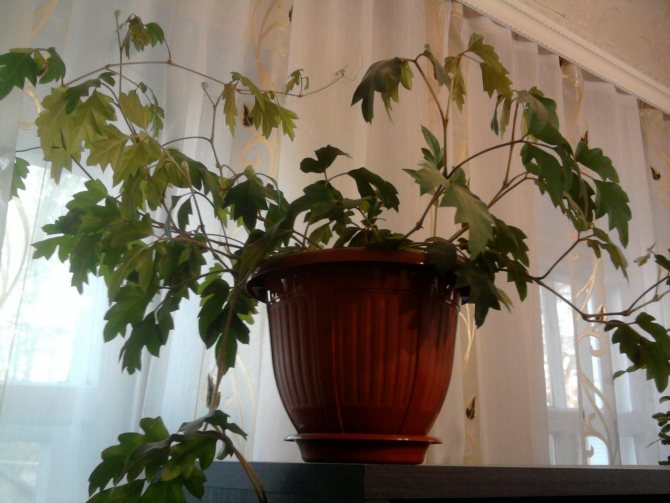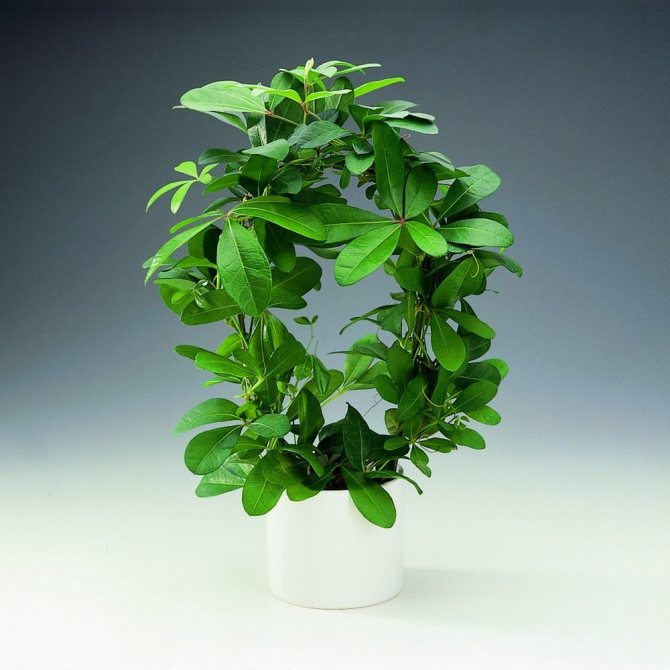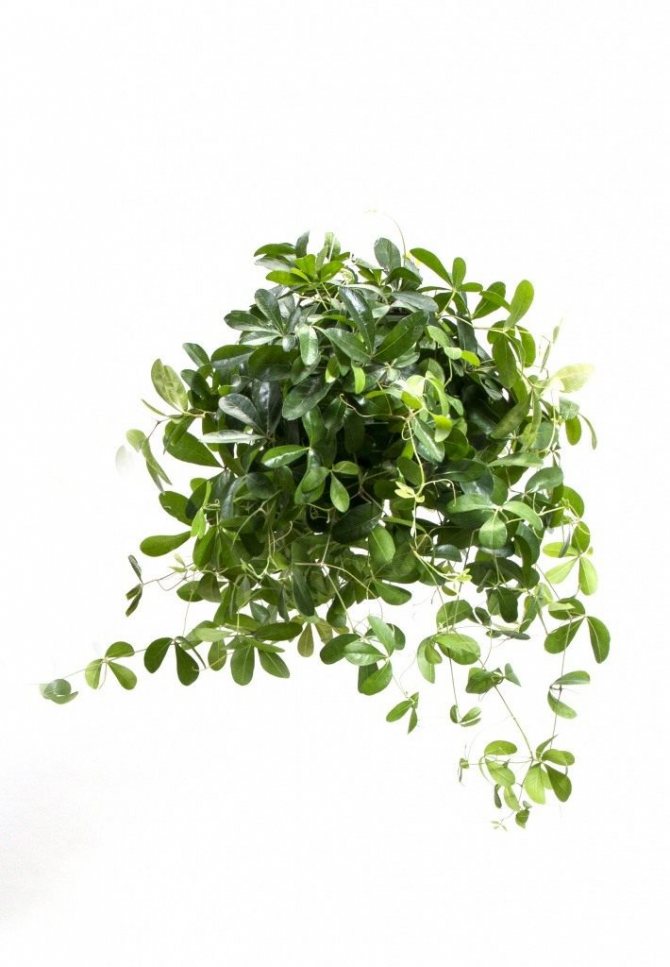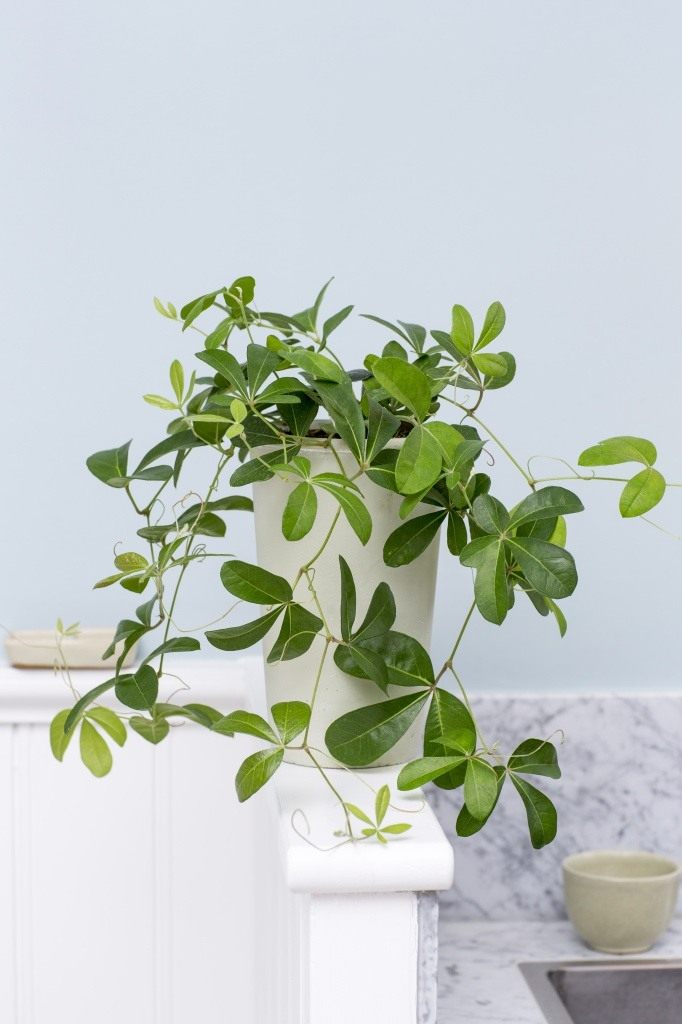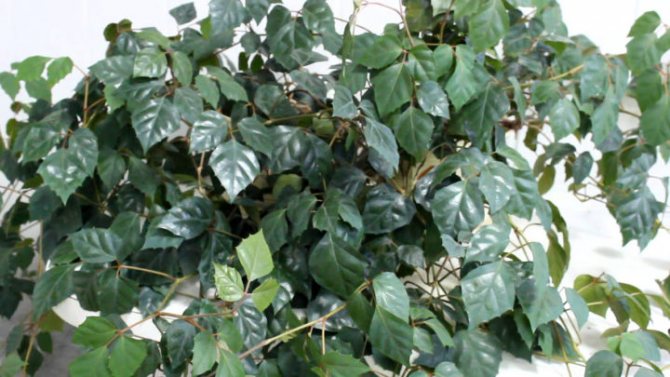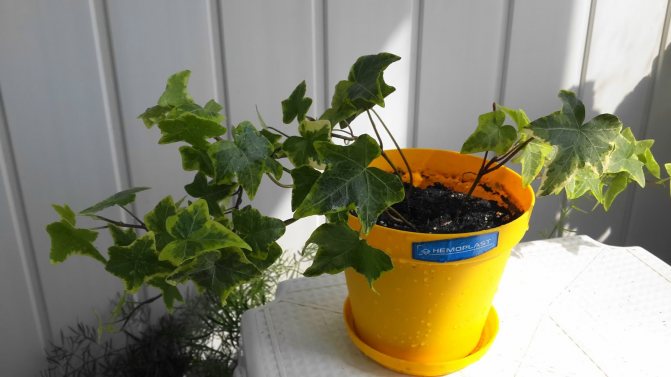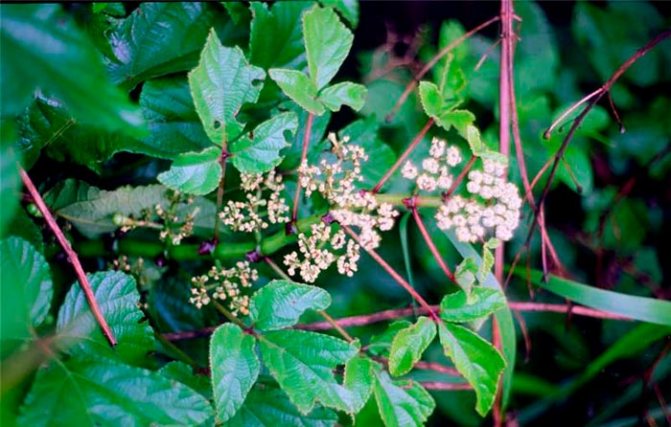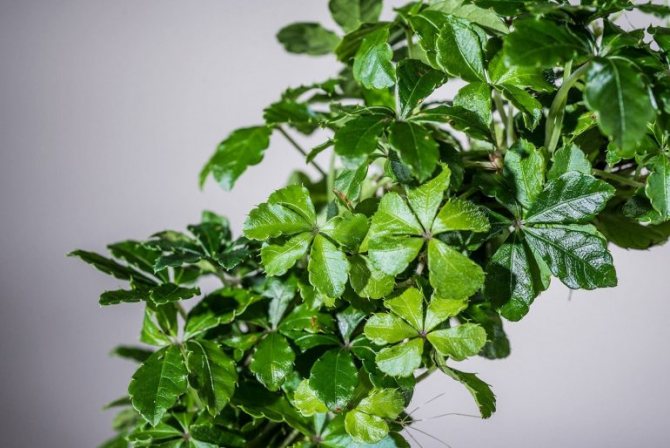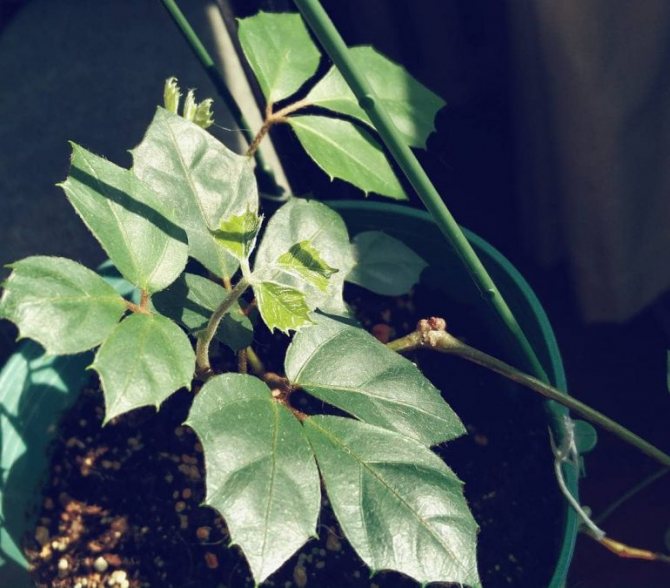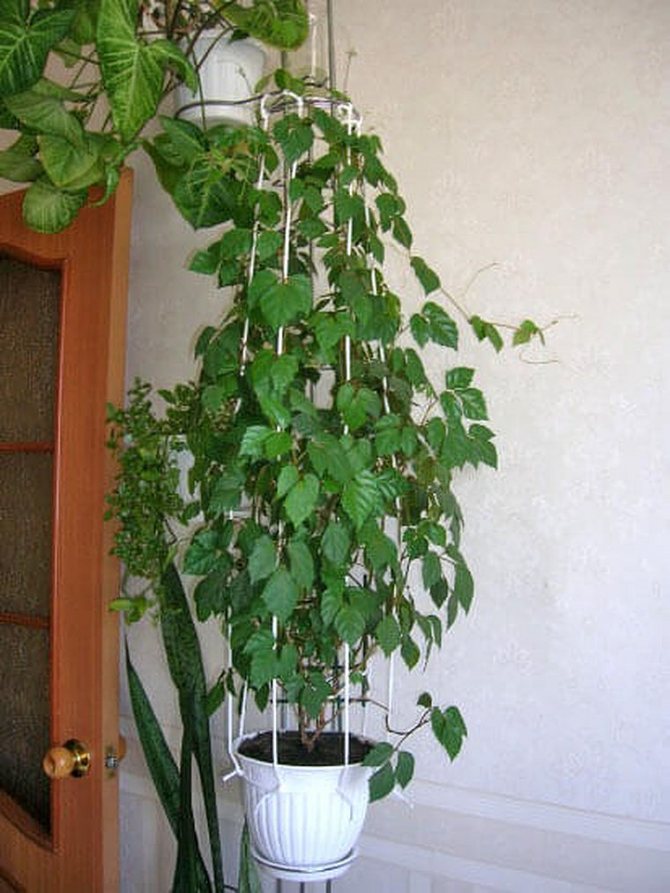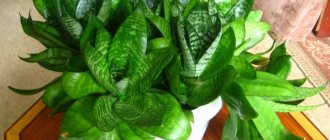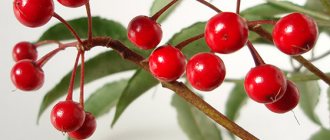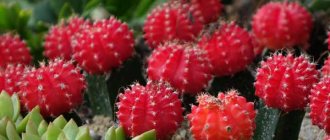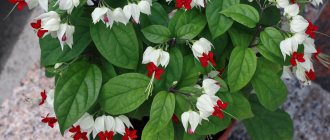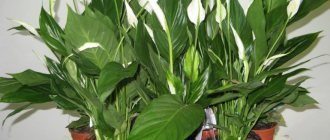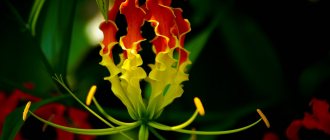Among ornamental foliage plants with unusual leaves, the roicissus has long won the title of classics. We have this curly liana common under the name "birch" and is considered a plant almost boring. Meanwhile, a talented indoor steeplejack is able to surprise not only with unpretentiousness and rapid growth. Roicissus loves coolness, but at the same time it adapts well to ordinary room conditions. Its leaves with an ideal shape change depending on the type of plant, they do not always resemble birch leaves and delight not with variegation, but with impeccable contours. And the rocissus itself is an ideal plant for decorating a corridor, hall, foyer, and a bright hallway.
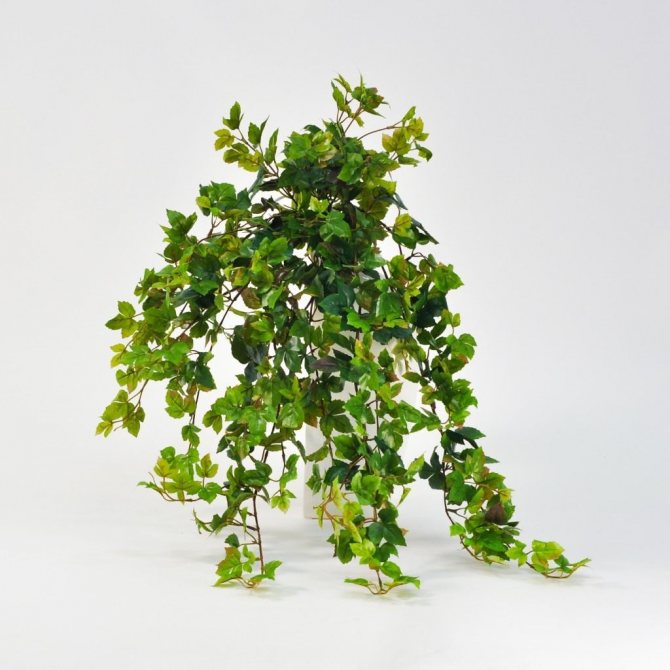
Roicissus (Rhoicissus). <>
Birch flower: home care
Caring for a home birch flower usually does not cause any difficulties, since the plant is unpretentious and grows quickly under favorable conditions.
Illumination
Partial shade is considered a suitable place for him. Although in a well-lit place, it also grows well. The main thing is that direct sunlight does not burn its leaves.
Temperature regime
The minimum temperature for cissus is 15 degrees. To prevent the plant from shedding its leaves in the cold season, it is better to protect it from drafts.
Watering
For irrigation, it is better to use only settled water at room temperature. Excess moisture is contraindicated for the plant. In summer, watering is best done after sunset. The basic rule is: the higher the flower is, the more often it is recommended to water it. In the cold season, the plant is recommended to be watered with warm water. It is best to do this in the morning with a small-perforated watering can.
In the warm season, cissus needs regular spraying.
Soil care rules
If the water slowly seeps into the ground, then it needs to be changed.
It is recommended to loosen the soil 2 times a week.


Home flower birch. Care
It is necessary to feed the birch once a week with complex and mineral fertilizers.
Transplant and pruning
Birch is recommended periodically transplant... This is necessary for the rejuvenation of the plant. For transplanting, it is better to use a soil mixture consisting of the following ingredients:
- turf soil - 2 parts;
- sheet soil - 2 parts;
- humus - 2 parts;
- coarse sand - 1 part.
The cissus transplant process is as follows:
- Lay a 10–20 mm thick drainage layer on the bottom of the flowerpot.
- Place part of the soil mixture on top of the drainage layer. It should fill one third of the container.
- Gently place the rhizomes of the plant in the center and sprinkle with the remaining soil.
- The plant must be placed in such a way that the upper roots do not reach the surface by 3-4 cm.
- The soil is not compacted.
- After transplanting, the plant must be watered immediately and moved to a dark place for several days.
Rocissus species
An indoor plant, under the name of birch or indoor grapes, which has spread literally everywhere in our country, is actively used for landscaping offices, schools, and in modern interiors, and in classic collections of indoor plants. Simple, unassuming, shade-tolerant, versatile in use, it captivates with a combination of beautiful, but not variegated greenery and surprising ease of formation.It is often called the "grandmother's" plant, familiar from childhood, but Roicissus have something to surprise.
Roicissus (Rhoicissus) is a genus of flowering plants of the grape family.
Roicissus are evergreen creeping and climbing shrubs with very long shoots ranging from 60 cm to several meters long. They are among the most popular indoor vines. But the range of Roicissus is not limited only to the species that has received such a simple popular nickname. Moreover, birches are not the most attractive of the Rocissus. There are 15 plant species in the genus of these beauties, which have long become cultured. Of these, only 3-4 species are grown as a room culture.
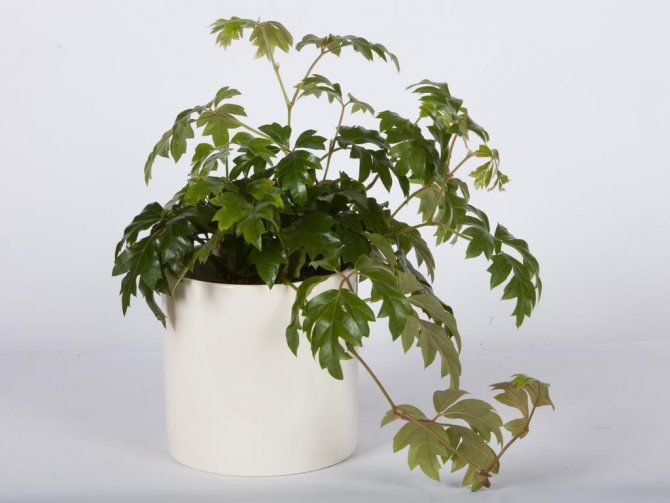

Birch, or rhombic roicissus (Rhoicissus rhomboidea).
Birch, or roicissus rhombic (rhoicissus rhomboidea) is a climbing evergreen liana, light, flexible, with elongated internodes of thin shoots reaching 1.5 m in length. The complex leaves, consisting of three rhombic lobes, sit alternately on long stalks. The dark, rich green color on the upper side of the leaves is combined with a dull green, lighter color on the lower side. The veins on the leaf stand out brightly, ending in a tooth along the edge of the leaf. The greenery of the plant, including the shoots, is usually covered with reddish pubescence. Roicissus has a thin tendril. A birch is used both as an ampelous plant, and as a pot plant, and as a liana on a support, and to create green walls, screens, screens.
Roicissus cape (rhoicissus capensis) is an ornamental deciduous climbing plant, suitable for growing on supports and for the role of ampelous culture. A fast-growing, unpretentious and hardy plant conquers with rather large and perfectly symmetrical leaves, resembling grape leaves in shape, but only distantly. They are not divided into leaflets-lobes, but whole, flaunt with large, curly grooves, reaching 20 cm in diameter. The height of the plants always depends on the support and the form of cultivation, but even on the trellis, the Cape Roicissus will not exceed 2 meters. This look is more effective, suitable for large compositions.
The Cape Roicissus has very beautiful varieties with improved characteristics. For example, the luxurious leaves of the Evergreen Grapewine variety with deep indentations and impeccable shape conquer with a rich, bright green color.
Roicissus finger (rhoicissus digitata) is radically different from its “colleagues”. His leaves really resemble fingers in shape. This elegant, somewhat prim plant looks better on curly supports.
One of the key trump cards of the Rocissus, which made the birch tree so popular, is its simplicity and simplicity of requirements. For all Rocissus, the care is the same, and even the more decorative and rare species are grown according to the same laws. The plant needs systemic watering, but otherwise the selection of conditions and care for Rocissus is not at all difficult. Well adapting to different temperature conditions, dry air, shading tolerant, birch and its gathering are really very easy to care for.
Reproduction of a home flower birch
Cissus is usually propagated using cuttings subject to the temperature regime of about 20 degrees. To do this, it is necessary to cut off the apical shoot from the plant. For rooting cuttings, water or a sandy-peat substrate is suitable.
The birch can also be propagated using twigs... Spring is considered the most suitable period for this. For reproduction, branches that remain after pruning the plant are suitable.
After rooting, branches or cuttings are transplanted into nutrient soil. With proper care, the plant will grow rapidly.
Temperature regime
A comfortable temperature for summer should be in the range from +20 to +25 degrees, in winter it can be from +15 to +20 degrees.A birch tree can survive a short drop in temperature even up to +5 degrees, but it is undesirable to arrange frequent endurance tests. Fluctuations in temperature can provoke diseases.
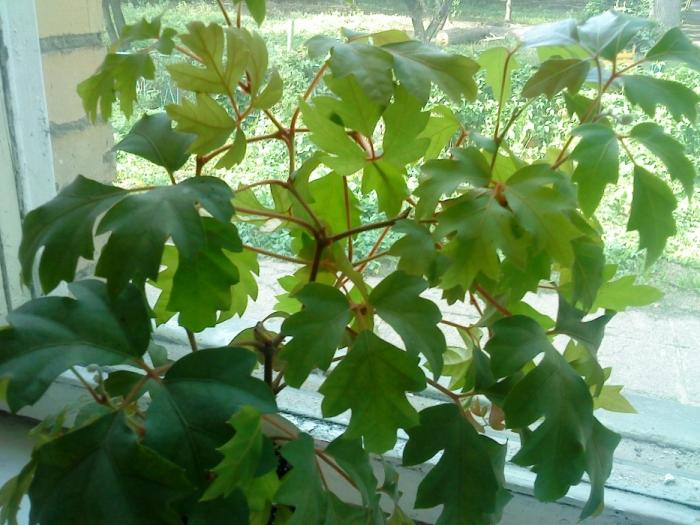

A birch is a houseplant, it does not like air baths in an open space, unlike other home flowers, it does not need to be taken out to the balcony or garden in the summer.
What to do if the leaves of a home birch dry or turn yellow?
When growing cissus, the following problems may arise:
- Dry leaf tips indicate that the air in the room is too dry.
- If mold or brown spots appear on the leaves, then this indicates that the soil is too wet.
- If a birch tree grows up quickly, while its leaves fade or look unnatural, then this means that the flower needs fertilization.
- With a sharp drop in temperature or with rotting roots, leaves from a plant can fall off en masse.
- In the cold season, the growth of the birch slows down. This is considered a natural process. The lack of nutrients is a slowdown in growth in summer.
Diseases and pests
Roicissus in indoor culture shows an enviable resistance to diseases, including fungal ones, but due to its tolerance to dry air, it often becomes a haven for spider mites or aphids. It is better to fight insects right away with insecticides, and the plant itself must be isolated from other indoor pets.
Common problems in growing Rocissus:
- the appearance of spots on the leaves when watering with cold water;
- falling leaves when watering with cold water;
- stretching shoots with insufficient soil nutrition and in dense shade.
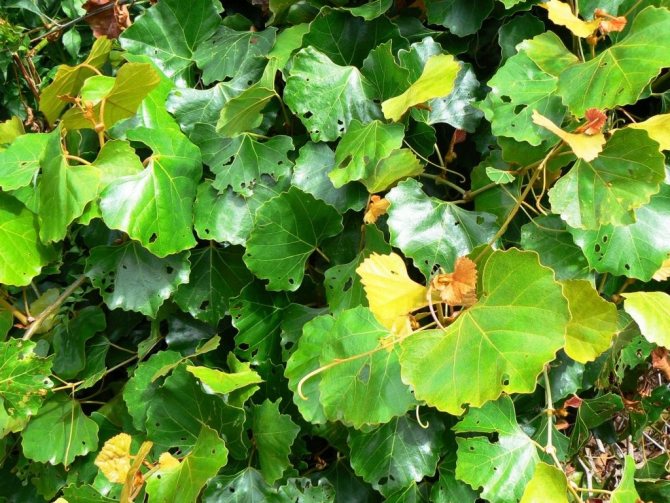

Roicissus Cape (Rhoicissus capensis).
Home flower birch: signs
Some superstitions and omens are associated with the birch houseplant. The people believe that this flower survives men from the house. There is no direct evidence for this, but still, many do not risk planting this flower at home. Everyone has their own opinion on this matter. Below are some of them.
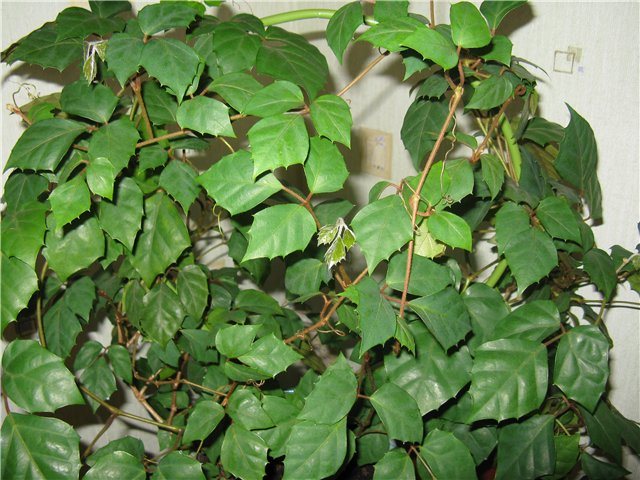

Oksana, 30 years old, writes: “I am of the opinion that it is undesirable to keep a birch tree in the house. It seems to me that this is not fiction. I no longer keep this plant in my apartment, I threw it out a long time ago. And I want to say that my personal life has improved. I don’t know, of course, maybe it all coincided, but I don’t want to risk it anymore. ”
Milana, 35 years old, writes: “Birch is a harmless plant, besides it is very unpretentious and grows quickly. Copes well with gas pollution. I don't think this beautiful plant can negatively affect family relationships. "
Lena, 27 years old, writes: “If you believe in the omens, then they will definitely come true. Several of these birches grew in my family. They grew magnificently, beautifully, but we had a woman's monastery in our house. The men did not stay in the family for a long time until we put the cissus in the entrance. "
Olga, 29 years old, writes: “I somehow grew a birch tree, but, unfortunately, recently it has dried up. I believe that this flower cannot keep men out of the house. My mother-in-law has been growing this plant for more than one decade. Despite this, she and her father-in-law have lived in perfect harmony for 40 years. My husband and I are doing well, too. "
Someone might think that plants are created solely for beauty, but this statement is not entirely true. Indoor flowers, like all living plants, have a certain energy. It can be either positive or negative. Some types of flowers require a special location in order to avoid negative influences. Below we will talk about what flowers can be kept at home. What flowers can not be kept at home - we also learn from our article.
Growing
The birch plant rarely blooms in indoor conditions, its main advantage is the beauty of evergreen foliage.It can be grown as ampelous, then long shoots, which can grow from one and a half to two and a half meters, very picturesquely descend from the pot in all directions, as if specially showing their carved foliage. The shoots are equipped with delicate tendrils, so the flower is often grown as a creeping vine, substituting it with a trellis, posts or strings.


It is quite possible to organize a decorative curtain or an exuberant cascade of branches from a birch tree, designers love this plant for its pliability, and beginner growers for its unpretentiousness.
Cissus not only decorates the apartment, but also contributes to the health of its residents. He has very active phytoncides, which lead a victorious fight against pathogenic bacteria in the air, he perfectly cleans the atmosphere in the literal sense of the word, even copes with formaldehyde.
They say that a birch tree has a beneficial effect on a person's condition - it reduces fatigue, increases efficiency.
Folk omens and superstitions
Do not be afraid - not all flowers make the atmosphere in the room unfavorable. There is a list of plants that you should take note of.
Cactus
A cactus does not have negative energy if it is located in the kitchen or hallway. You cannot keep him in the bedroom, otherwise he can make the spouses "prickly" and embroil them. There is a version that it is useful to place a cactus next to the monitor during operation - it absorbs electromagnetic radiation and reduces its effect on humans. Cactus is also called a male plant - people believe that it strengthens vitality.
It is also not recommended for a single woman to keep a cactus in her apartment, otherwise you can scare off your fate. Married women should not be afraid of this flower.
cacti decorate the living interior
Ivy is appropriate in a men's apartment, but in a women's apartment, it can harm the personal happiness of the hostess. It is believed that ivy is the "owner" and will not tolerate a stranger in the house.
Fat woman
A fat woman, or a money tree, can and should be kept in the house when it blooms with leaves. If they fall off or the plant gets sick, this will lead to money spending in the family or ruin.
Upstart flower
This flower is best grown in non-residential areas, well suited for an office or supermarket, as well as other public places. Being in the house, the upstart flower will bring poverty to its owner.
Callas
Calla is a flower of well-being and family happiness. It is believed that if you keep callas in the house, love and understanding will reign in it. Calla helps heal heart disease and relieve sadness. There is a belief that in order to get pregnant, put a calla in the house.
Pruning rocissus and support
Roicissus plants tolerate clipping and shaping well, and their shoots can be shortened to thicken and limit the desired plant size. Every year, at the very beginning of spring, you need to inspect the bushes. If there are bare, thinned, damaged shoots on the liana, then it is better to cut them out or shorten them to hemp.
Despite the sufficient plasticity and not so large dimensions, the roicissus requires the selection of reliable supports. For this liana, stable, inflexible, large versions of ladders and trellises are installed. Rocissus can be used to create green walls and screens; for a “solid” coverage, the plant must be guided by combining garter and pruning until the desired effect is achieved.
What kind of flowers can you keep at home?
Flowers significantly decorate the interior, please the eye and improve the psychological atmosphere. Below we will talk about what flowers can and should be kept at home for well-being.
Uzumbar violet
Another name for the Uzumbar violet is “the flower of love”. It is best if it is white - then there will be peace, happiness, love and harmony in the family. Pink and blue violets are best placed in the kitchen.
Aloe is a healing flower, rumors about its harm are nothing more than a fairy tale.For a long time, this plant brought only good energy to the house, the juice of this plant is added to many cosmetic products, as well as to medicines.
aloe is a medicinal house plant
Myrtle is considered a very positive plant and is highly recommended to keep in the house. For unmarried girls, myrtle brings quick love, and for married girls, a long and strong marriage. Myrtle is very often given to newlyweds on their wedding day as a symbol of love.
Anthurium
Anthurium is considered a male plant, it literally attracts male energy into the house and gives happiness to all single girls. Thanks to Anthurium, family relations are improving, quarrels and squabbles leave the house, a pleasant aura appears.
Decembrist Schlumberger
The Decembrist Schlumberger got its name because it blooms in winter, in December. This flower literally spreads around itself "vibes of happiness and goodness." Even selfish people get better with it. It is believed that if this plant begins to bloom at the wrong time, only because a favorable atmosphere reigns in the house.
Ficus
Ficus definitely has no place in the bedroom, it is best to place it in another room. Ficus has powerful energy that can drive away negativity and aggression from the house. Some believe that ficus can bring peace and tranquility to the home, as well as cope with anxiety and depression.
ficus will be useful for the energy of people, but it is better not to put it in the bedroom
How to fertilize correctly
The most intensive growth of a birch occurs in summer, therefore, it needs additional nutrition at this particular time of the year. Top dressing is done with universal complex fertilizers for domestic plants about once every 2-3 weeks. In addition, in spring and summer, a complex agent is added to the spraying water for the growth and increase of green mass. It is also used every 2-3 weeks. It is important to know that it is impossible to fertilize and spray at the same time with water and the preparation, as this can cause burns on foliage and roots.
What flowers are not recommended for an unmarried girl to keep?
First of all, there should be no climbing plants in the house, as they take love away from the family. These include:
Other love-love flowers, and which of them cannot be kept by an unmarried girl in the house, are described below.
Birch
The birch flower is popularly considered muzhegon. It will not be easy for an unmarried girl to arrange her personal life, since the birch tree does not tolerate male energy next to her. For this reason, a birch flower cannot be kept in your home, however, as well as married couples.
Chinese rose
Rose is everyone's favorite and most popular flower; it is called the "queen of flowers". Undoubtedly, the Chinese rose is a very beautiful plant, but it is fraught with danger for young girls and married women. People say that the rose is able to draw the energy of love from the house, being in some way an "energy vampire". There is no return from the rose.
Orchid
The orchid is quite demanding to care for, it has very beautiful and eye-catching flowers. But behind the external beauty is the ability to absorb the energy of the household. It is said that the orchid blooms due to the faults of its owners. In addition, its presence in the house can disturb your sleep, for this reason, do not put it in the bedroom.
Begonia
Begonia is a very popular flower, but it is better not to keep more than one pot in the house. It cannot be said that begonia carries exclusively negative energy, but it can do a disservice to unmarried ladies by taking away love for oneself. True, she still gives part of the positive energy in return.
Tulips
Tulips are the most spring flowers, this plant has a lot of fans. Tulips in the house can disturb the peace and "present" insomnia; they can be kept only in the kitchen. Also tulips can lead to hair loss and deterioration of the girl's appearance.
Fern
It is good to grow a fern in a garden or a greenhouse; it is not at all suitable for an apartment. An abundance of ferns in the house can cause severe headaches, as its flowers emit a large amount of carbon dioxide. In addition, the fern can discourage fans from you.
Tuberose
The aroma of tuberose is very attractive, it is often used in the composition of perfumery compositions. But if you are in a relationship, then tuberose will affect them in the most negative way.
Of course, the question of whether it is possible to keep flowers at home is rhetorical. Of course, it is possible and even necessary. However, not all flowers are "equally useful."
Benefit and harm


An unpretentious roicissus will be useful for people with the opposite character to a person.
For those who are literally fixated on bringing cleanliness and order in the house, the plant will help you to feel more relaxed about cleaning and putting things in order.
A home flower helps soften people who are too principled. A flower that adapts to any conditions helps a person adapt to unfavorable living conditions.
He will teach you to be above all material wealth, to calmly relate to the fuss around making money.
In terms of health, indoor birch helps fight intestinal diseases. It also increases the body's immunity and adaptability to the adverse effects of the environment.
Read also: Will walking on a treadmill help you lose weight?
Birch is a wonderful type of indoor plant for those housewives who want to plant trees in their own apartment, but do not have enough time to take care of the flower. The plant with minimal maintenance will delight you with its appearance and give the room a stylish look.
What flowers cannot be kept at home?
Plants that are poisonous are undesirable to place in those apartments where there are children or pets, since they have a number of negative properties.
Aglaonema
Opens the list of Aglaonema - this is the most poisonous houseplant that is capable of secreting poison. Even touching its flowers, you will feel some irritation. Aglaonema is very dangerous when ingested internally - it affects the central nervous system and provokes nausea, headache and even fainting. You should be very careful with this flower.
Spurge
Euphorbia is definitely not a flower for happiness, since milkweed juice can burn the skin and cause severe swelling of the mucous membranes up to loss of vision.
Rhododendron Sims
Rhododendron Sims is a very poisonous flower, in no case should it be allowed to enter the body. If this happens, then call a doctor immediately, otherwise you can fall from convulsions and lose consciousness.
Dieffenbachia
Dieffenbachia is dangerous for its juice. Children or animals should not be allowed near the flower, otherwise there is a great risk that they will try the dieffenbachia stem. As a result of ingestion, the sap of the plant will provoke the strongest gag reflex due to poisoning.
Pests and diseases
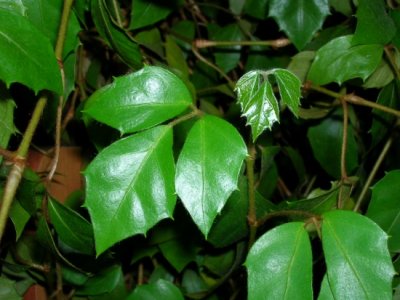

This flower is rarely affected by pests.
The appearance of scale insects, aphids, thrips, spider mites on it is possible.
They fight them by washing the foliage with warm water with the addition of laundry soap and treatment with insecticides.
Rocissus can become ill in winter. If, with a cool content, waterlogging of the soil is allowed, the root system of the plant will be affected by the fungus.
Due to the lack of moisture, the leaves begin to turn yellow and dry..
After normalization of watering, the roicissus quickly recovers. Yellowing of the leaves can also indicate a lack of fertilizer.
Dropping foliage home birch can start from constant exposure to drafts or a room with sudden temperature changes.
This often happens when keeping a plant on a balcony with open windows. Therefore, in cool weather at night, you should close the balcony so that your birch does not freeze.
From waterlogging brown spots appear on the leaves... The same symptoms indicate a lack of nitrogen or phosphorus in the soil. Spill any nitrogen fertilizer on the Rocissus and the flower will heal quickly. Remove all affected leaves and stems immediately.
Growing in too dense soil leads to oxygen starvation of the flower roots. Signals about it curling and subsequent fall of foliage.
List of poisonous plants
This group of plants includes those species that should not be kept at home, especially in the presence of animals or children due to extremely dangerous properties. A child, like a pet, is capable of poisoning with similar flowers or getting burns if handled carelessly.
If there are no children and animals in the house, then take precautions when caring for such plants. Be sure to wear gloves when handling these colors and rinse tools thoroughly. Do not under any circumstances cut these flowers with a knife intended for food in your kitchen.
Consider this group of plants:
- Dieffenbachia (Dieffenbachia).
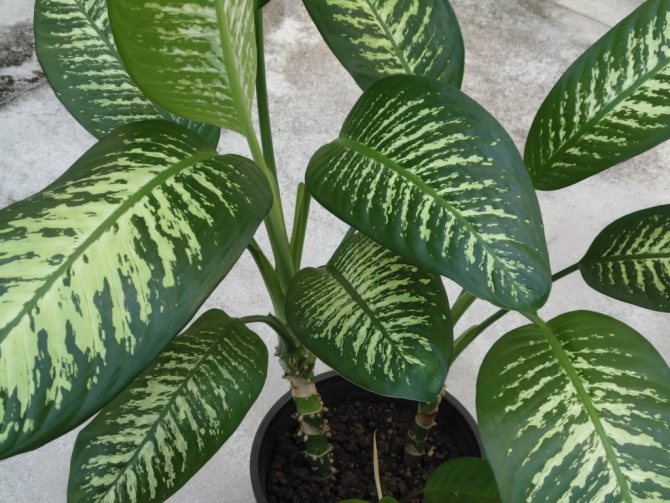

A popular indoor plant that attracts flower growers with huge yellow-green leaves that form a fluffy crown. The flower is dangerous for its sap, which is released when the leaves or stem are cut. If a pet or child decides to chew any part of this flower, then the juice that gets into the body will cause severe poisoning. In addition, dieffenbachia juice causes burns and irritation to the skin. - Oleander (Nerium oleander).


Popular for its bright crimson flowers. The ingestion of oleander juice into the body causes blindness. The scent of a flowering plant contributes to dizziness and feeling unwell. - Euphorbia (Euphorbia).


This plant is represented by a huge number of species and various forms, therefore, it cannot be described unequivocally. Many representatives are similar in appearance to cacti and have thorns, the prick of which is also dangerous for a living organism. Euphorbia contains white sap in its stem and leaves, which causes burns and irritation to the skin. When ingested, it causes poisoning.
By the way, on our website there is a large article about caring for this plant, so we recommend that you read it!
- Croton (Croton).
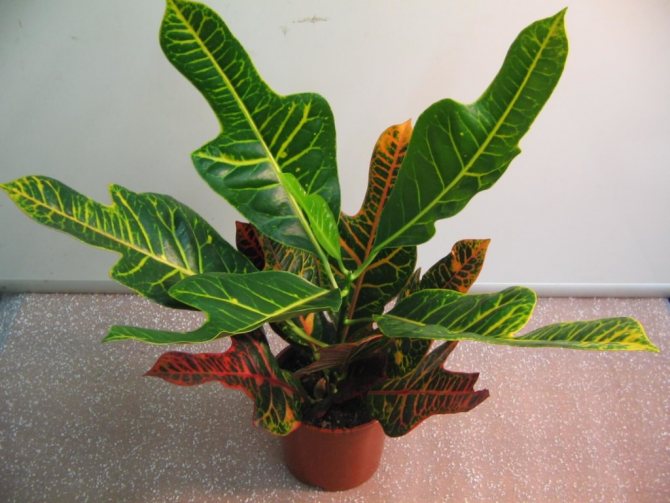

If we talk about this plant, which belongs to the euphorbia family, then it looks like a small tree with variegated leaves that have an elongated shape. Its flowers are inconspicuous, and it rarely blooms at home. The sap of this plant causes burns on the skin. If the juice gets into the bloodstream when cut or ingested, then the case may end in death or resuscitation. - Azalea (Azalea).
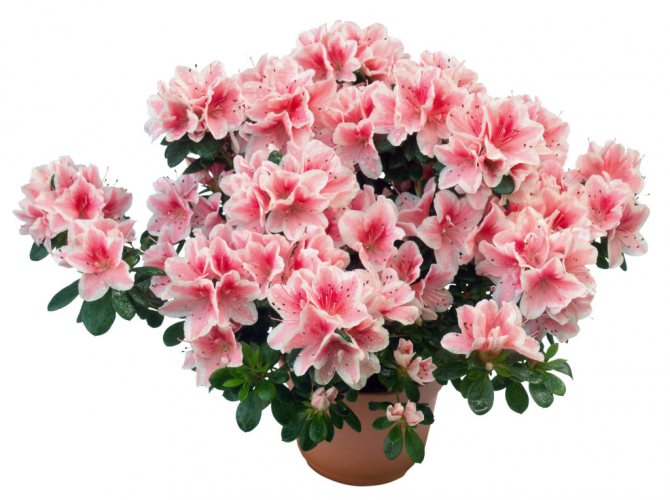

A common plant among flower lovers. It is famous for its lush and attractive flowering. The colors are very diverse: white, pink, red, yellow in azalea flowers. It is the Azalea of Simsa (Indian Azalea) that is considered dangerous. Ingestion of the leaves of this flower causes intestinal colic and cramps. - Mimosa bashful (Mimosa pudica).


A bizarre plant that externally is represented by thin stems and small leaves. The leaves look fragile and delicate, and upon contact with an object, they curl up into a tube. Long-term human contact with these flowers leads to hair loss and loss. Sometimes it comes to complete baldness. The fact is that this plant emits harmful and toxic substances that poison the human body. - Evergreen ivy (Hedera).


This plant belongs to the Araliaceae family. It is a shrub in the form of vines. Cats are very attracted to the bright green color of the leaves of this plant, but in ivy, the leaves and berries are poisonous, so the animal can die or be severely poisoned. - Adenium (Adenium).


A very beautiful plant, which is represented by a thick, obese stem in the form of a small tree trunk.At the top are sparse leaves and a large number of medium-sized pink flowers. The plant is very toxic, adenium juice is especially dangerous. On contact with the body, it causes poisoning and burns. - Monstera.
- The euphorbia family. The juice of many members of this class is poisonous and causes burns on the skin.
- Aroid family. Most members of this group are toxic plants. Their juice is especially dangerous.
- A family of kurtovs. This class includes the most dangerous plants for human and animal life. They attract with their bright and variegated appearance. Wear gloves when working with this family of flowers.
- The nightshade family. In this class, far from all plants are poisonous, because the well-known potatoes and tomatoes belong to this family. But house flowers are most often toxic, and especially their fruits. Berries cause indigestion, nausea, vomiting.


Monsterra is not a very dangerous plant, but still it is better not to start it at home.
By families
The list of poisonous plants seems to be much longer, so when buying a flower, ask which family it belongs to. There are 4 main families of the most poisonous plants, namely:
Watch the video for details:
Sometimes indoor plants are not only beautiful, but also dangerous. For this reason, be sure to use protective equipment when working with flowers. If, in spite of everything, you decide to acquire such flowers, then try to protect them from possible contact with animals and children.
Description
Roicissus is a plant from the grape family, native to Central Africa.
In its homeland, the flower grows in tropical forests. Its genus includes 10 species.
It has simple or complex (three-part) leaves, green in color, located on long, flexible stems.
Under natural conditions, shoots reach lengths of up to 6 meters. At home, the maximum length of Rocissus stems is 3 meters.
The birch tree blooms with small, false umbrellas. However, in indoor conditions, it almost never blooms.
Folk signs: what is possible, what is not?
To trust folk omens or not is a personal matter for everyone. At the same time, it is worth remembering that most often signs arise on the basis of long-term observations of ancestors. Consider what the appearance of some indoor plants in the house entails:
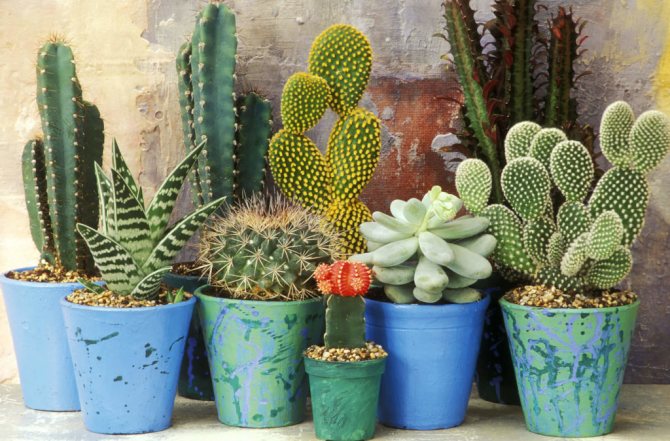

Cacti are unfavorable plants for the home. It is believed that the presence of a cactus in the apartment turns the husband into a person suffering from alcoholism. There is a second sign, which says that in a house where there is a cactus, a girl will not marry happily or will not meet a chosen one at all. Also, cactus has a bad effect on relationships between family members.- Ferns take vitality from a person, being an energy vampire. In a house with a fern, a person will feel constantly tired, inactive, sleepy.
- Ivy and climbing plants, according to folk signs, scare men away. In a house where there are such plants, a man will constantly strive to go somewhere. In addition, ivy negatively affects the state of mind, depriving a person of optimism and balance. It is best to keep these plants outside the house. So, ivy will act as a protector.
- Dieffenbachia is dangerous for its poisonous properties, and also takes health away from the household.
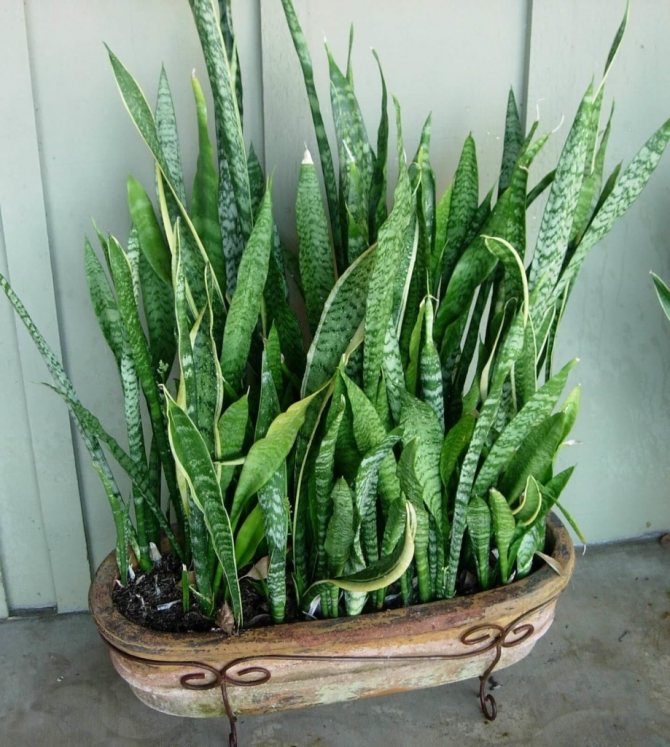

Mother-in-law's tongue is a plant that has practically no stem, with elongated longitudinal leaves with a bright green color. It is believed that the presence of such a flower in the house leads to loneliness and the inability of the girl to get married. The plant has a negative effect on feminine strength, so it is dangerous to keep it in the bedroom. The flower, as it were, "drives" men out of the house.- Sansevieria is a curious plant that looks like the tail of a fish.For this reason, it is also nicknamed the "pike tail". The leaves of the flower, painted green, have such a bizarre shape. The plant blooms and has a pleasant aroma. But, according to the signs, it negatively affects family and personal life. The presence of this flower in the house leads to loneliness.
- The palm tree often decorates the interiors of many rooms, but it is better not to put such a flower at home. The palm tree contributes to the appearance of grief in the family, if it was presented to you. Save this plant for office spaces or other locations.
- Ficus can cause allergies, but in addition, it is believed that the flower negatively affects the appearance of children in the house. If you want a child, then this plant is not worth purchasing. There has been a long debate about ficus. There is a directly opposite opinion on this plant. It says that ficus solves the problem of infertility and contributes to family well-being.
When organizing a flower corner in an apartment or landscaping your home, choose the flowers that best suit you based on your lifestyle, the appearance of the flower and its properties.
Illumination
The birch grows better in good lighting conditions. If there is a choice, then the flower pot should be placed on the east or west window. On the north side, the plant will also grow, but maybe a little slower, but on the south window it will have to be shaded, it is more expedient to even move it a meter away from the window. Sunlight is very good, but it should be slightly diffused, but not direct and aggressive.
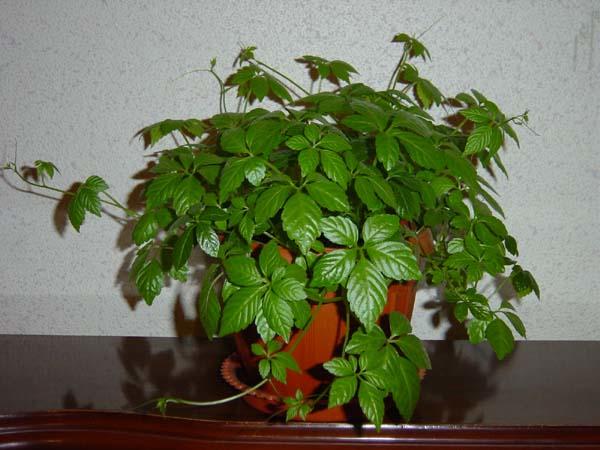

A wild relative of our birch tree in the tropics and subtropics winds among the foliage and branches of large trees, where it gets a lot of diffused light. The same illumination should be tried to create for a houseplant, although it can survive in partial shade, it perfectly tolerates artificial light.
How to make a phytowall from a birch
Landscaping of an apartment or house, not only a beautiful design, but also an excellent air filter that can be installed in any room: office, home study, children's room or living room.
Making a phytowall yourself is not difficult at all. To do this, you need to purchase a phytoblock (phytomodule). The structure does not need to be connected to a water supply or electricity, so it can be placed anywhere in the apartment.


The phytoblock must have several parts:
- Strong wide frame. It is necessary so that the plant does not stick to the wall, this can provoke the appearance of mold due to poor air circulation.
- A layer of polyethylene or other material that does not allow moisture to pass through.
- Cloth with small pockets. The fabric for the canvas must be used very durable; it is best to purchase synthetic felt. It does not degrade so quickly from moisture.
- A drip tray is required to collect water from the bottom.
Pruning
Nettle or houseplant Coleus
Home birch in a pot is an ideal plant for those who like to experiment and create. Thanks to pruning, you can shape the crown.
Branches that are partially exposed, dropping foliage, as well as ugly growing parts of the shoots, are subject to removal. You can remove those parts of the crown that do not fit into the shape of the plant. It is not advisable to remove many parts at the same time.
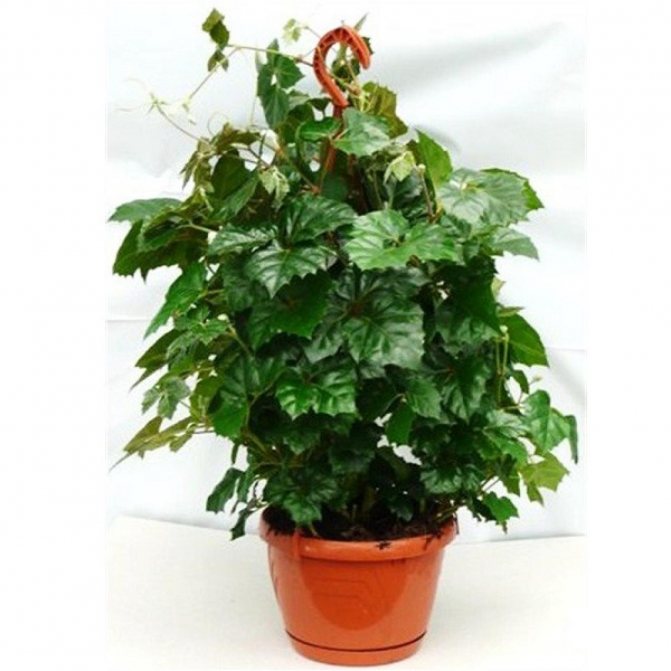

Cissus crown formation
The procedure is carried out as follows:
- Prepare tools: sharp pruning shears, activated carbon powder.
- Identify the items to be removed.
- Cut off the appendages with pruning shears, making 1 precise cut.
- Treat the affected areas with activated carbon powder or plant preservative.
Important! The procedure should be carried out in early spring, while the specimen has not entered the phase of active growth. If necessary, you can do pruning in the summer, but in smaller quantities.
Diseases and parasites
Caring for a birch at home is not difficult, but if you do not follow the listed rules, this will lead to the flower starting to hurt or various pests will appear. Despite the fact that this culture is unpretentious, it can suffer from various diseases and parasites.
An example is spider mite... It appears on a birch and begins to parasitize only if the flower has been improperly looked after, for example, when watering was irregular and rather poor. As a result, the thinnest cobweb gradually appears on the branches and leaves. To combat such a pest, it is recommended to use insecticidal preparations. In addition, all rules must be followed.
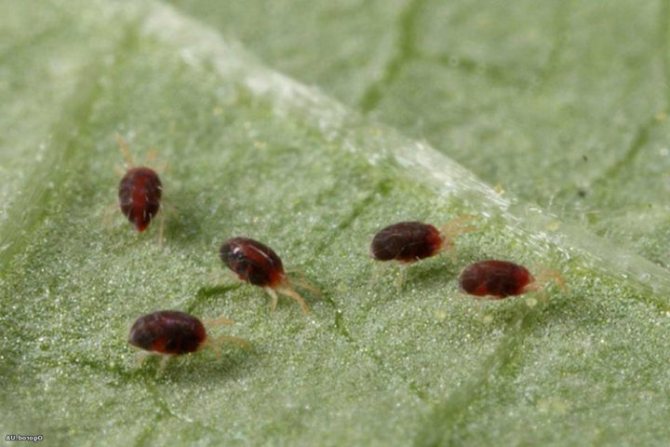

Shield attacks an indoor flower also due to the fact that the rules of care are not followed. But the plant will quickly recover after special treatment, the establishment of regular watering and loosening of the soil.
It can still damage the birch tlI. They get rid of it in different ways. For example, you can use special preparations for spraying shrubs. A soapy solution (use only laundry soap) is also suitable, to which a small amount of ordinary wood ash is added.
One of the diseases is root rot, which develops due to improper care. The plant gradually withers, withers, leaves fall off. In this case, it is required to carefully remove the shrub from the container, cut off diseased roots, treat them with ash or charcoal, and then transplant them into a new container. Be sure to cover with fresh soil.
Another dangerous ailment - powdery mildew... It appears on the foliage of a birch in the form of a whitish bloom. Gradually, the shrub withers. To combat this disease, it is recommended to use a special drug "Topaz".
Most often, birch leaves begin to dry out and fall off. This is due to a number of factors:
- Excessively dry air. This can be corrected by frequently spraying the flower with a spray bottle.
- Rotting roots. In this case, the plant must be transplanted.
- Seasonality. Leaves can peel off in autumn.
- Draft.
- Lack of oxygen to the roots. This is due to the fact that the soil is overly dense. In this case, it is supposed to loosen it up the next day after watering.
If you have not yet decided what kind of flower to keep at home, then this, of course, is a roicissus, because it will decorate any wall. In addition, it is completely unpretentious, so no special care is required for it. And you should not believe in various signs, since this plant will only decorate your home!
How to transplant "birch"
It is necessary to transplant rhomboid cissus in the spring, but it is not necessary to do this procedure annually. As a rule, a birch is transplanted every third year, and the rest of the time they just loosen the soil well and add fresh soil.
The pot is taken with a slightly larger volume, taking into account the increased mass of the roots. The container should be ceramic: recently, plastic flowerpots have been increasingly used, which is not entirely correct, since they do not allow air to pass through, and the earth turns sour in them, because evaporation is only superficial.
How birch breeds
Home indoor flower with purple leaves
The decorative flower is propagated in two ways by cuttings and division. Cultivation by dividing the bush is carried out in spring or late summer. The flower is removed from the pot and divided into several parts. Young shoots are planted in separate flowerpots.
Reproduction by cuttings is carried out at any time of the year. Shoots are cut from the bush, on which there are two or more leaves. The cut cutting is placed in a solution of potassium permanganate, after six hours it is immersed in a container with clean water. As soon as the sprout takes root, it is planted in a container.
Ivy myths
What interesting can you tell about this type of ivy, like a birch? Can a houseplant be kept at home if so many scary tales have been invented about it? Folk omens say that ivies (and all similar plants) do not need to be kept at home, as they survive men. And not just all males, but husbands. Later, this legend was transformed: they began to believe that ivy in the house is a sign of divorce, and usually because of treason.
Currently, the birch tree has become more attractive from the point of view of the area of subtle spheres: it is believed that cissus contributes to creation, the emergence of new ideas, and an increase in immunity.
The last statement is also true from a purely scientific point of view - in addition to its decorative function, the birch tree improves the ecology of the room: it purifies and humidifies the air, kills harmful microorganisms and absorbs some harmful substances, for example, formaldehyde. So you can safely keep the birch at home.
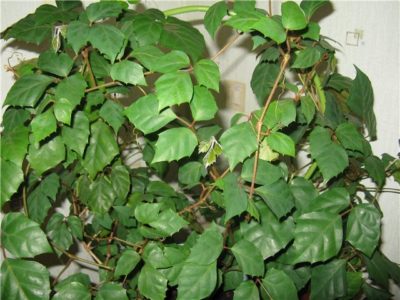

Roicissus is a frequent guest in the homes of indoor flower lovers.
The people call this flower "home birch" for the original, reminiscent of a birch shape, leaves.
This rather unpretentious plant is distinguished by its great decorativeness and is suitable for growing in wall pots. Outwardly, Roicius is a bit like the indoor Tetrastigma grape.
Problems in the process of growing a plant
It often happens that the plant, for no apparent reason, begins to lose foliage, turn yellow or wither. What could be the reason for such a state of the flower?
- If in the autumn period the flower suddenly suddenly began to turn yellow, and the leaves fall off, then most likely the reason is very frequent watering or lack of lighting. It is enough to reduce the amount of moisture and put the birch in a brighter place.
- If the leaves of the birch began to curl, and brown spots began to appear on their surface, it means that the flower does not have enough moisture or nitrogen fertilization. In addition, it may be due to over-watering the flower.
- If the leaves begin to turn yellow, curl or fall off, most likely the plant does not have enough oxygen. To remedy the situation, it is necessary to loosen the soil in the pot more often.
- If the tips of the birch leaves suddenly begin to dry out, this indicates a very dry air in the room. To help the flower bounce back, it is enough to put it away from the battery, and spray it more often.
- If pallor is observed in the leaves, then this is a signal that it is oversaturated with sunlight. To help the plant, it must be removed to a room with diffused light and kept out of direct sunlight.
- If a birch tree has a massive fall of leaves, then the reason for this may be a sharp change in temperature. Also, the presence of a plant in a draft can lead to a massive fall of foliage.
The plant will always remain lush, beautiful and healthy, if you do not forget, take care of it correctly.
It should be said that the birch is a natural filter that is able to absorb harmful substances released in the air.
1. Seven Secrets of Success:
| 1. Growing temperature: during spring and summer can be grown at normal room temperature between 18 and 24 degrees Celsius. In winter, it is better to provide a cool dormant period in a room with a temperature of about 10 - 13 degrees Celsius. |
| 2. Lighting: shade from direct sunlight, you can choose a semi-shaded place to keep the roicissus. |
| 3. Watering and humidity: Abundant and regular watering in spring and summer with drying of the topsoil a couple of centimeters deep. In autumn and winter, the frequency of watering is reduced in accordance with the air temperature. Air humidity is increased mainly to prevent pest infestations. |
| 4. Features of the: Rocissus is easy to grow at home with minimal maintenance.Plants can be used for vertical gardening of rooms. |
| 5. Priming: Plants easily adapt to a wide variety of soil conditions. Loose soil rich in organic matter, even nutrient-poor substrates can be used. |
| 6. Top dressing: during the period of active growth, every 2 weeks they are fed with liquid fertilizers for decorative leafy plants, in the fall, feeding is gradually reduced and monthly feeding is carried out in the winter months. |
| 7. Reproduction: by apical cuttings or by sowing seeds in spring. |
Botanical name: Rhoicissus.
Roicissus flower - family... Grape.
Origin... Africa.
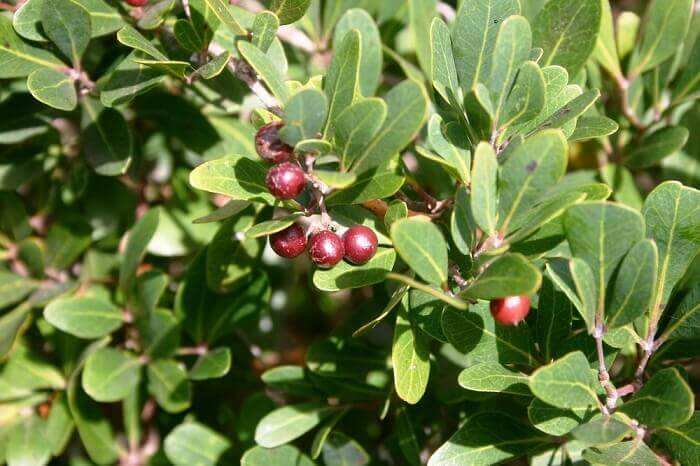

Description... The genus Roicissus or indoor birch consists of 12 evergreen trees and vines with woody vertical or creeping stems. Leaves are green, glossy, cordate, rounded or finger-dissected with a serrated edge, up to 20 cm long, arranged alternately. The underside of the leaf blade and young shoots and leaves sometimes have fine pubescence. Roicissus clings to the vertical support with its antennae and easily climbs along it. Flowering is of little interest.
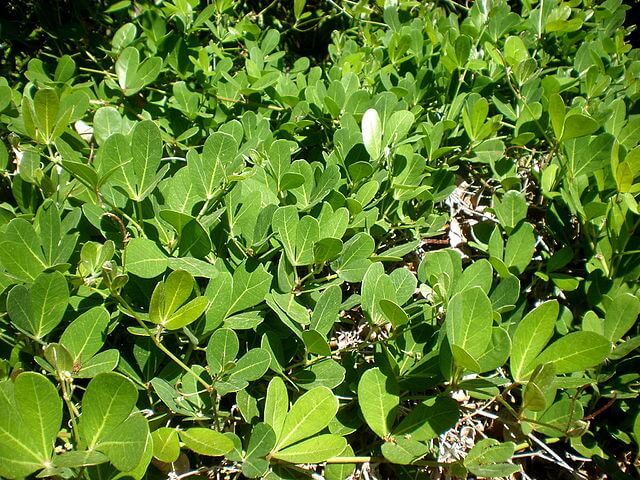

Height... The roicissus plant develops quite quickly and reaches a height of 2 m when grown in room culture.
Care features
It is best to place the plant in a bright room, but you should not place it in direct sunlight, since they can quickly turn yellow birch leaves. In too dark places, the flower stops growing actively and may dry out. The lowest temperature for successful indoor cultivation is +13 ˚С. A lower air temperature will kill the flower.
Do not water this plant too often. This can lead to the fact that the root system quickly begins to rot. At the same time, it should not be allowed that the earth in which the flower grows dry and crack. When watering, the water should be at the same temperature as the room temperature.
Indoor flower yucca: plant care at home
In the summer, especially when it is too hot, it is best to water the birch at 9 pm. In other seasons, watering can be carried out until 12 noon. Depending on the temperature conditions in the room where the indoor birch tree is located, it is worth paying more attention to care: if the pressure rises in parallel with the high air temperature in summer, then the plant becomes stuffy.
In winter, the flower hibernates. This is due to the fact that its growth quickly stops and stops completely for the whole winter. Therefore, you should not panic, since the indoor birch tree is just sleeping and gaining strength in order to please its owner in the future. When watering, you should definitely pay attention to how intensively the moisture is absorbed into the soil. If this happens unevenly, then it is necessary to transplant the flower, since the soil composition is depleted, and the culture simply does not have enough vitamins and minerals for full growth.
As the dust settles on the plant, lightly touch it with a soft and damp cloth to wipe it off the sheet plates. At the same time, it is recommended to spray the entire flower with warm water every day from special equipment.
Landing rules
Reproduction of indoor birch occurs due to shoots that form on the uppermost parts of the plant. With the help of them, it is easy to propagate a room birch at home. Landing rules:
- Gently pluck the shoots.
- Place them in a container of warm water so that the glass is only half full. The liquid must not be allowed to emit an unpleasant odor. In this case, it is best to replace it.
- Wait for the formation of roots. At the same time, more than three of them should appear, strong and long. Then the shoot is ready to be transplanted into the soil.
- Transplant into the ground. The substrate should contain peat, sand and ordinary soil from the garden.
There are many flower growers who like to pamper their indoor plants, which is why they take them outside in the summer. Unfortunately, not everyone knows that the birch does not tolerate such manipulations, so it should not be kept in the fresh air.
Fertilization
For proper cultivation, you must not forget about feeding the birch with fertilizer mixtures. Fertilization is done twice every one to two weeks. You should also have a water feed for indoor plants. This is a kind of powder that can be purchased at any flower shop. It just needs to be added to the water that the plants are watered with. This method of watering strengthens the flowers.
Rowley's rosehip care at home
It is worth noting that it is by no means impossible to make complex feeding: this can destroy the plant. After the soil has been fertilized, you should wait until two weeks have passed, and only then spray it with wet top dressing.
Flower transplant
It is worth transplanting an already adult plant once every five years. This must be done without fail. Otherwise, the birch may stop growing. For transplanting, it is best to use pots that have been made from:
- glass;
- ceramics.
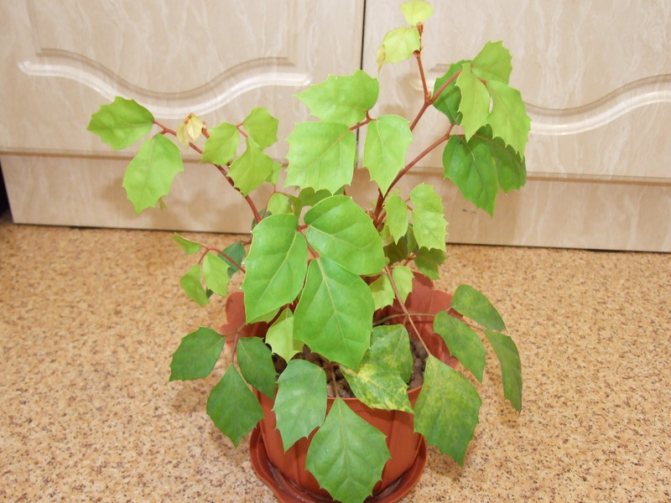

The containers, which were made of plastic, do not allow the root system of the plant to breathe.
What species does the birch belong to?
Birch is a houseplant belonging to the genus Cissus, which has more than 350 species of shrubs, semi-shrubs and creeping vines. The genus name is the Greek word kissos, which translates as ivy. Cissus have nothing to do with ivy as a species, but are called so exclusively because of the similarity in appearance.
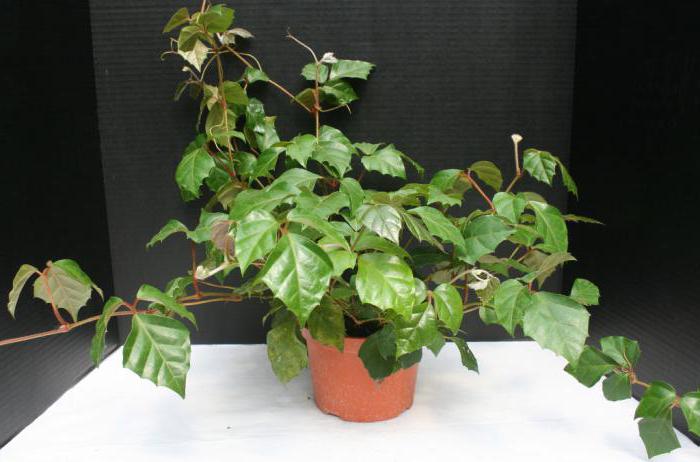

The most famous representatives of this genus of plants are Antarctic cissus, or, as it is also called, indoor grapes (liana with large oblong dark leaves); multicolored cissus (liana, distinguished by its richness of colors: red-violet stems, green-red leaves with a barely noticeable silvery pattern) and rhomboid cissus (birch).
Cissus rhomboid is a widespread herbaceous vine with complex diamond-shaped leaves and a dense brownish fluff on the stem. The flowers of the birch are small, collected in inflorescences in the axils, from which edible red berries later ripen. Unfortunately, at home, cissus rhomboid does not bloom and does not bear fruit.
Birch transplant
Indoor birch periodically requires a transplant. As a rule, this procedure is supposed to be carried out every 3 years. First you need to prepare the substrate. You can buy it ready-made at a flower shop or prepare it yourself. To do this, you need to take 2 parts of turf and garden land, then add a part of humus and the same amount of sand. As for the latter, it must be riverine and have large fractions. Such a substrate, due to its looseness, will pass water, oxygen and nutrient compounds well.
Cissus: reproduction and care
The types of cissus are so striking in their variety that one article is not enough to tell about all. Here are the main ones that are grown indoors.
- Cissus Antarctic. The most popular type is liana, which grows up to 2 meters long. Its leaves are in the shape of an egg, on which there are notches. The flowers of the plant are small, green. Cissus Antarctic produces edible berries that taste like grapes.
- Cissus rhomboid is a shade-loving plant, up to 1.5 meters long. Grown on a support.
- The multicolored cissus is the most beautiful and whimsical. It has glossy purple-green leaves, which it sheds for the winter. Demanding on air humidity and temperature conditions.
- Cissus quadrangular is an unusual cactus liana with dense, tetrahedral shoots. Grows up to 1.5 meters.
Signs and superstitions associated with this flower excite many indoor plant lovers. Birch refers to the vines, which are credited with the property of expelling males from the house where they grow. If you are superstitious, then perhaps this will happen, however, those who do not believe in omens, most likely will not feel this negative impact on themselves.
But other properties of cissus are interesting - it has a huge bacterial activity, due to which it destroys bacteria that cause diseases of the gastrointestinal tract, and allergic rashes. The plant intensively absorbs dust and harmful substances contained in the indoor air. Growing this miracle at home, you can avoid many diseases, as well as dig up vitality and reduce fatigue.
Flower propagation is very simple. It is enough to cut off the upper cuttings and root them in water or soil, having previously treated the slices with a growth stimulator. As soon as the plant grows roots, it is transplanted into a pot.
Taking care of your cissus is pretty simple. The plant will grow great if you follow these simple rules:
- all plants are light-requiring, except for the rhomboid species, which loves shade. It is recommended to place them on the south, east or west window, but do not allow direct sunlight to hit;
- the optimal growth temperature is 20-25 degrees. Birch prefers moist air, therefore, in dry weather, it should be sprayed;
- the plant loves moisture, which evaporates quickly due to the lush foliage. In hot weather, abundant watering is necessary;
- feed the flower every week with compositions for indoor plants.
Thanks to the high bacterial and phytoncidal activity of the indoor flower, the atmosphere in the dwelling is cleared. Microcomponents secreted by cissus kill bacteria that provoke allergic diseases and gastrointestinal disorders.
Decorative liana perfectly humidifies the air in the room, absorbs excess dust.
It helps to get rid of formaldehydes - fumes from building materials, which are often the causes of pain in the head, provoke nausea, and irritate the respiratory system.
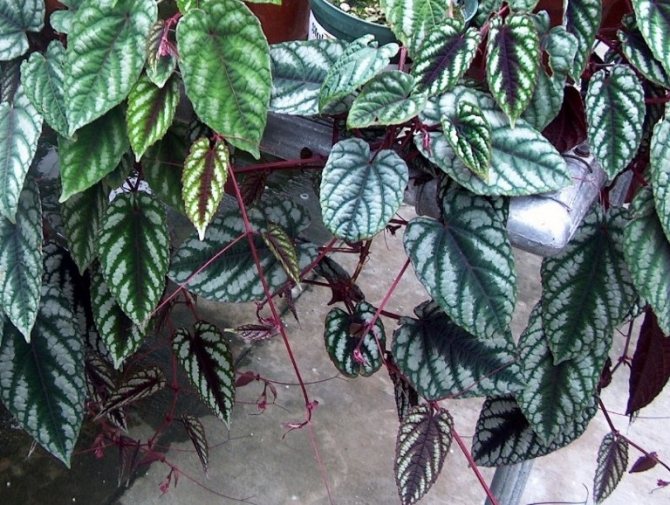

Several pots of plants in the room increase vitality and reduce fatigue.
Folk omens and superstitions associate the cissus flower, like most lianas, with the muzhegon flower, that is, the flower is able to survive the spouse from home. Whether or not to keep ampelous plants at home, everyone decides for himself, most flower growers do not pay attention to these myths.
There is a popular belief that a birch is a muzhegon plant. In other words, a man will definitely leave the house where the birch tree grows. But this sign works only 50%, and many people who have had a birch houseplant for decades will confirm that all the men in their family are safe and sound and are not going to go anywhere. And any signs work, if only you believe in them.
Therefore, the birch does not bear any negative.
Plant care
The indoor flower gets along very well indoors, and there are no special requirements for caring for it. Of course, like any other house plant, cissus needs to follow certain rules of care, however, they are not complicated.
- Care begins with choosing the correct location for the plant pot. Despite the fact that the birch can perfectly exist in both light and slightly darkened rooms, this plant does not like direct sunlight. If you ignore this condition, then the leaves of the plant will begin to dry out very quickly, turn yellow, and then fall off. Therefore, you should always ensure that the sun does not directly hit the flower.
- You should not leave the pot with the plant on the balcony or in the open air, and also allow drafts to enter the room. The optimal room temperature for a birch will be about 20 degrees plus or minus three degrees.As for the winter season, the plant thrives best at a temperature of 14-16 degrees, although it can easily adapt to warmer air temperatures.
- Birch grows best if the soil in the pot is systematically loosened - this will help better air penetration into the soil. So an important condition for care is loosening the earth, which should be carried out at least once every seven days.
- As for humidity, cissus grows well both in dry and in high humidity indoors. So there should be no problems with choosing a place where a birch can be placed - it can be a living room, a bedroom, and even a kitchen.
- The plant is favorable to water procedures. That is, in order for the vines and birch leaves to please with their abundance, you can periodically wash them under warm shower jets. Vines and leaves should be washed so that water does not penetrate the soil. If washing seems to be a risky undertaking, then it can be replaced with spraying from a spray bottle. Such care is especially important during the extremely warm winter season.
- An important condition that must be met while caring for a birch is the frequency of watering the plant. Too abundant watering is not required for the flower; it is necessary to moisten the soil only if its top layer has noticeably dried out. The birch loves stably moist soil. At the same time, it is very important not to allow stagnation of water in the pot, and at the same time do not forget to water the cissus at the first signs of drying out of the top layer of the earth. During watering, it is necessary to use exclusively warm, settled water. If possible, it is best to filter the water a little so that as few chlorine particles as possible remain in its composition. And if, after watering, a lot of liquid has formed on a tray with a flower, then it is recommended to immediately drain it, and gently loosen the top layer of soil.
- Grooming includes pruning the plant. This procedure will help to give the birch a suitable shape and size. What's more, pruning helps rejuvenate the plant. Only old shoots and those vines that have reached a great length should be cut off.
- Regarding top dressing, for better growth of the birch, you can use any complex fertilizer intended for this kind of crops. If the flower is not fed, then this will lead to the fact that it will stop developing and give an increase in green mass. The frequency of dressings should not exceed once every two weeks during the growing season of the flower. As for the winter season, feeding can be excluded until the end of February, but only if the apartment is more than twenty degrees Celsius. If the temperature is less than this mark, then it is recommended to feed the flower once every thirty days.
Useful video
By watching the video below, you can find out about the features of caring for the Roicissus plant at home:
If you find an error, please select a piece of text and press Ctrl + Enter.
Birch is a houseplant also called roicissus. It is distinguished by its unpretentiousness. You can often find this kind of culture in office spaces. Also perfect for growing in residential buildings. This ampelous flower will look good in various rooms, an additional advantage is its simplicity in terms of maintenance and care.
Reproduction of rocius
The birch tree has two breeding methods:
- With the help of cuttings. It is best to do this in spring, when new branches appear on the vine. The cutting should be carefully trimmed so that at least two internodes remain on it. All cuttings should be placed in a container with a wet mixture of sand and peat. After 12-14 days, the plants will be ready to be transplanted into a normal container.
- With the help of processes. After the winter rest, the plant must be cleaned of old shoots and slightly rejuvenated.Cut twigs can be placed in water until roots appear, and then transplanted into pots with suitable soil.
Additional care. In order for the birch to be more lush, it is necessary to pinch the tops of the stems. Scourges of birch trees need support, then they develop much faster.
Potential pests and control
Household plants, even the most unpretentious ones, also suffer from pest attacks, among which stand out:
- Leaf aphids: Many houseplants suffer from these small insects. It is very simple to get rid of them: you need to make a strong solution of laundry soap and spray the flower with it. It is easy to find aphids, you just need to carefully examine the seamy side of the leaves.
- A spider mite appears on a herbaceous vine with improper watering, when the plant does not have enough moisture. The main sign of the presence of mites is the appearance of small cobwebs on leaves and shoots. You need to fight ticks with a special tool sold in stores. In addition, the plant needs to be properly watered.
- The scale insect is a rather dangerous pest for indoor plants. Usually lives on stems and leaves, sometimes found on stems. Insects have an oval shape and a flat body, the lower part is tightly attached to the plant. There are two types of scale insects: false and real. The real ones know how to hide under the shell, like turtles, but the false scale insects do not have this ability. The reproduction rate of scale insects is high, so colonies appear very quickly. They suck the sap from domestic plants, which causes great harm to them. If you do not start fighting them in time, the vine will die. Means for exterminating scale insects can be purchased at gardening stores.
- Podura white. This insect lives in the soil, especially in one in which there is a lot of humus. It has an elongated body, on which small antennae are visible. It feeds on plant residues, but does not disdain living roots. Because of this, the plant can hurt and wither, and later die.
- Mealy bugs. These small worms are white in color, they like to settle on the back of the leaves, closer to the passing vein. Females of the worm are larger, their size reaches 0.5 cm. They make dwellings for their numerous offspring, the houses are like cotton balls. Females store eggs in them. Usually these insects do not live on vines, preferring cacti and azaleas to them, but if a birch tree is adjacent to these flowers, they can settle on it.


Main types
The list of possible varieties of the described plant has up to 12 names, but the following are considered the most common:
- Roicissus rhombic... In its natural habitat, it is either a liana, up to 20 m long, or a bush, about 6 m wide.The indoor plant is much smaller, but consists of the same main parts: light green, leathery, compound leaves with pointed edges and red hairs in the lower parts; small, rounded fruits that can be eaten. The color of the fruit is dark red or purple.
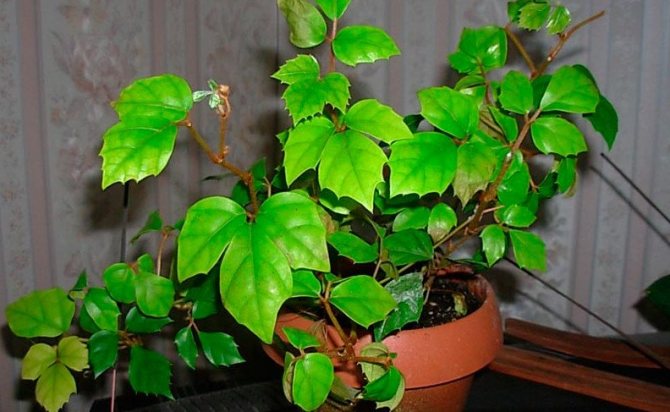

- Roicissus cape - liana, characterized by rapid growth and characterized by large leaf plates, about 20 cm wide. All of them are solid, lobed, smooth above and reddish, slightly pubescent below. In a young plant, they can be reddish, but with age they acquire a light green color. As in the previous case, the dark red fruits can be eaten.
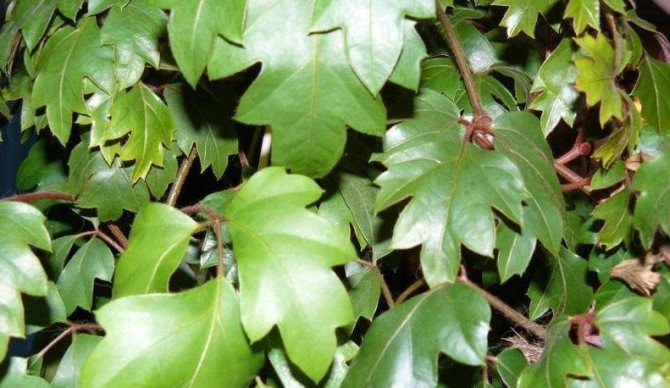

- Roicissus felt - liana-like plant, which in tropical forests can reach 20 meters in length or have the shape of a bush, up to 7 m in height. In a young specimen, all shoots are softly pubescent, but hairs disappear with age. The tendrils of the liana are velvety to the touch, the leaves are simple, rounded, whole edges, up to 20 cm in diameter. Each leaf plate has shallow teeth at the ends, a slightly wavy, smooth upper side and a lower one covered with red hairs.
Important! When choosing a specific variety for your home, it is advisable to pay attention to the Cape and rhombic rocissus, since, in comparison with the rest of the genus, they are easier to adapt to room conditions and their growth is easier to control.In young tomentose roicissus, the leaves have a rich dark green color, but with age it is replaced by crimson, which remains until the very period of leaf fall. The flowers are of a creamy green color, small in size, collected in a brush. The fruits are black-red, edible.
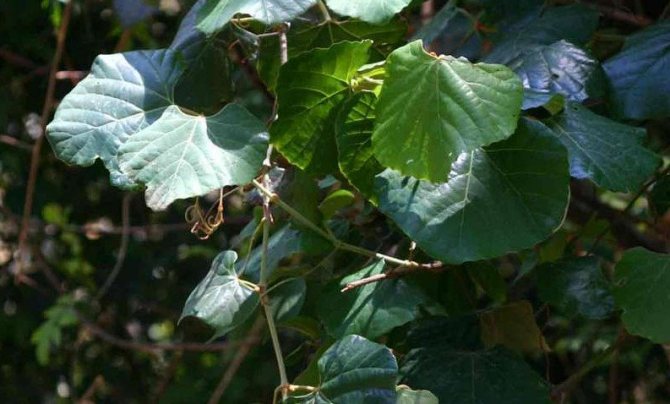

- Roicissus three-toothed... In its natural habitat, represented by a 10-meter liana or a small shrub reaching 3 meters in height. The entire surface of young shoots is covered with orange-red hairs. Leaves - compound (the leaf blade is divided into 3 parts), obovate, slightly serrated at the ends. Above, the dark green surface of the leaf blades is smooth, leathery and shiny, and in the lower part it is lighter and slightly pubescent. Flowers are small, green-yellow in color, with a slight greenish tint. Fruits are red-black, round, up to 2 cm in diameter.


- Roicissus finger - liana-like plant, with shoots up to 15 m long or a bush, about 4 m high. Lianas of young plants have red-brown hairs, but with age they thin and disappear. Dark green leaves consist of 4-5 parts, they are all whole-edged, with a smooth leathery surface above and "rusty" hairs below. Vine flowers are small, greenish-yellow in color. Fruits are black-red, round, 1.5 cm in diameter.
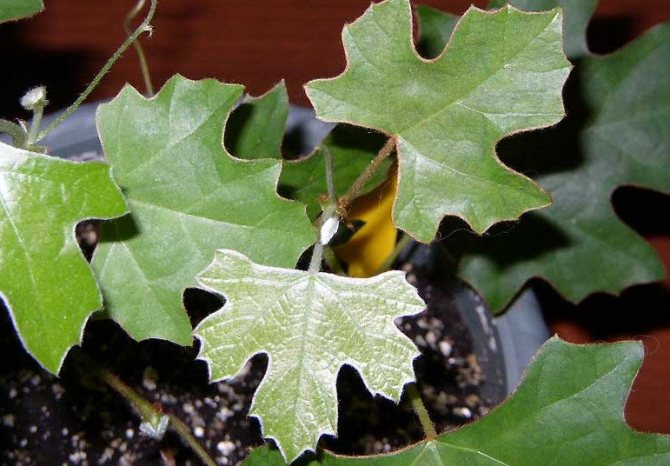

Cissus: species and varieties
The birch tree perfectly tolerates the absence of bright light, so it can be placed on the east or west windowsill. The flower will actively grow shoots even on the northern window. But the southern side of the house is categorically not suitable - direct sunlight will leave burns on the delicate foliage and weaken the plant.
You can place the cissus at some distance from the window and even in the back of the room, but in this case, it is advisable to place the pot next to a source of artificial light and illuminate the flower for several hours a day. The required spectrum of lighting will be provided by traditional fluorescent lamps or modern LED devices. The total daylight hours should be 10-12 hours. Therefore, you will need to turn on the lamp in the morning and in the evening during the cold season, as well as on cloudy days, when the lack of light is especially felt.
In the spring-summer period, when the night temperature ceases to fall below 16 ... 18 ° C, the flower can be taken out into the fresh air and decorated with it on a balcony, veranda or front garden. A birch tree is not afraid of a change of place, but when "moving" you should take care that the burning rays of the sun do not fall on the tender leaves, and sharp gusts of wind do not ruffle the thin shoots.
The tropical liana loves frequent airing of the room and the flow of fresh air, but only in the warm season. In winter, the plant should be protected from cold drafts, which weaken it and can provoke disease.
Cissus Antarctic is a species with whole serrated ovoid leaves. It tolerates shaded corners of the room well, clings to the support with antennae. The reverse side of the foliage has red pubescence. This species does not tolerate dryness in winter and too high temperatures, as well as shading.
Cissus rhomboid - a species with beautiful carved foliage, a tripartite leaf plate. Often grown in pots without direct sunlight. The length of the lashes increases to 2 m per season.
"Ellen Danica" is a flower with beautiful split leaves.
Cissus multicolored is a species that does not like temperature extremes and direct sunlight. The front part of the sheet plate with beautiful white stripes, the seamy side is purple. The plant needs support. This species tolerates shading well.
Cissus cactus is a rare indoor species with thickened shoots, clings to the support with antennae.
Cissus round-leaved - ovoid leaf plates with a jagged edge.
Cultivation of a culture will not cause any special problems, therefore, cissus or roicissus can be recommended even for novice growers. The basic requirements of the plant are easy to fulfill in an office or apartment:
- Air temperature. The birch tree will grow best at an air temperature of 18-22 ° C, but the optimal range is slightly larger and is in the range of 16-25 ° C. In winter, a cool content at a temperature of 10-15 ° C is preferable, but when the apartment is warm, the vine will adapt to such conditions. If suddenly during the heating season a birch tree loses some of its leaves, do not worry - with the arrival of spring it will quickly recover.
- Air humidity. Roicissus tolerates both dry air and high humidity. Therefore, it can be placed in a living room, in a kitchen, and in a bathroom with a window. The plant will gratefully respond to periodic bathing under a warm shower or spraying from a spray bottle. Such procedures are especially important during warm wintering, however, special air humidification using humidifiers or pallets with wet pebbles is not needed.
- Watering. The sequence of watering in relation to a birch is very easy to determine - if the top layer of soil in a pot has dried out by 1-2 cm, it's time to water. The plant needs a consistently moist soil, but without stagnant water and drying out of the earth. It is necessary to use settled water so that chlorine vapor can escape, or better - soft filtered water. It is advisable to drain the excess liquid that has drained into the pan, and gently loosen the upper moistened layer of soil in the pot. In winter, watering should be adjusted taking into account the temperature regime and, when the content is cool, water less often and less abundantly.
- Top dressing. Any complex fertilizer intended for feeding decorative deciduous crops can be used as an additional nutrition necessary for the active growth of lianas. Without a source of trace elements, the birch will "sit" in place, not giving an increase in green mass. The frequency of feeding is once every 2-3 weeks during the growing season (from March to October). From November to February, feeding is not needed, but if the air temperature in the room is above 20 ° C and the flower has enough lighting, then it is recommended to apply a half dose of fertilizer once a month.
- Pruning. It is needed to give the desired shape and adjust the size of the flower. In early spring, thin, damaged and bare shoots are removed by pruning. Pinching and trimming allows you to increase the growth of side branches and give the bush splendor.
The birch tree is not afraid of drafts, but only in the warm season. The currents of frosty air falling on the liana during winter ventilation can harm the delicate foliage.
The genus has more than 350 varieties. The most popular cissus houseplants include the following:
- Rhombic cissus (or rhombic cissus). Perennial vine with thin and flexible shoots.
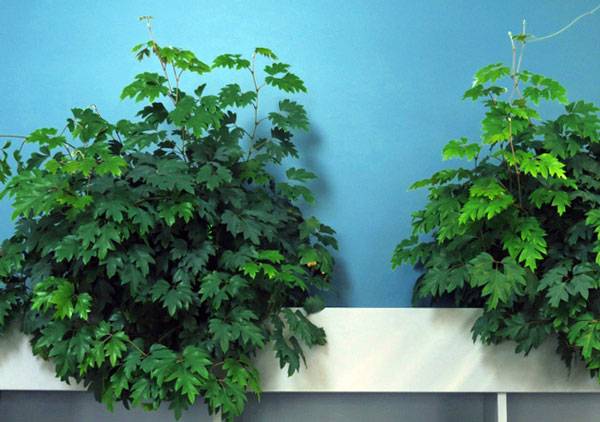

Diamond-shaped leaves are arranged alternately on small petioles. The racemose inflorescences are formed from small green flowers. After pollination in the ripening season, edible red berries appear. - Antarctic cissus (or arctic cissus). Evergreen vine with long shoots. The leaves are ovoid or oval in shape, with characteristic teeth at the edges.
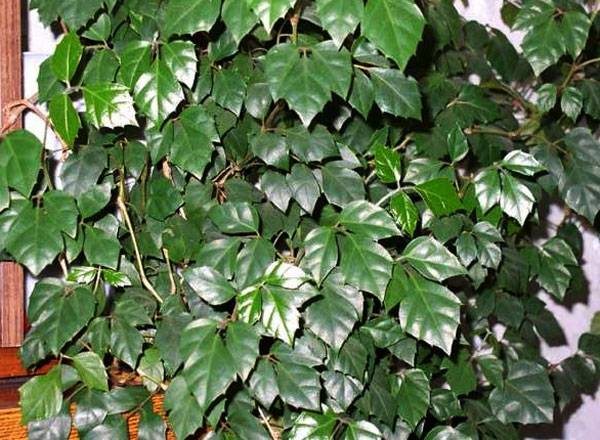

Color - dark green - on the front side, slightly lighter with light pubescence along the veins - on the back. The internode contains a leaf and, oppositely located, antennae. The inflorescence is formed from small yellow-green flowers. - Cissus is quadrangular. A representative of medicinal plants. Shoots are distinguished by their original tetrahedral shape up to 1-1.5 cm in diameter.
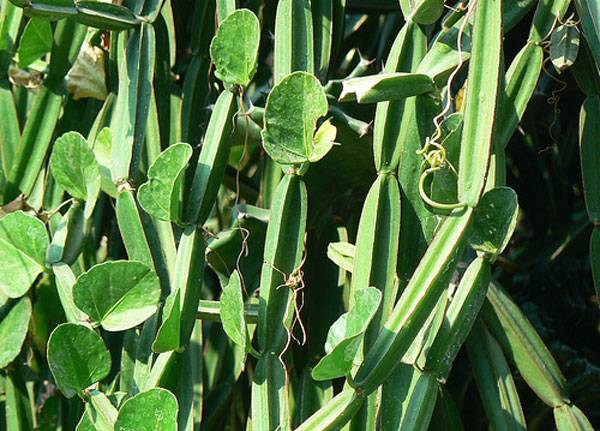

Small leaves, divided into three lobes, quickly fall off. The plant develops rather slowly in any conditions. - Cissus Helen Danica. A popular ornamental variety of rhomboid cissus.
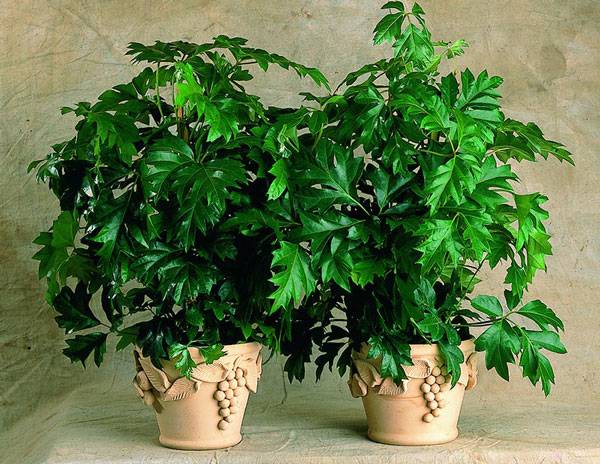

Has brightly carved leaves. - Cissus multicolored. It is popular due to the original color of the leaves.
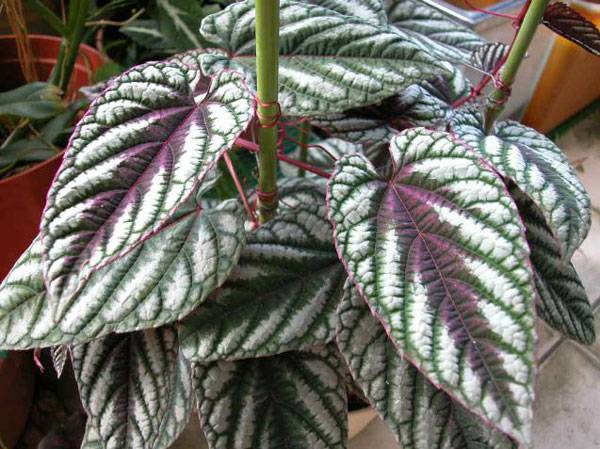

There are silvery and burgundy-brown markings on the obverse of a dark green color, the back surface is dark pink. On the eve of winter, the plant sheds most of the crown; with the onset of the warm season, the decorative foliage is restored. - Cissus is round-leaved. Liana with catching stems.
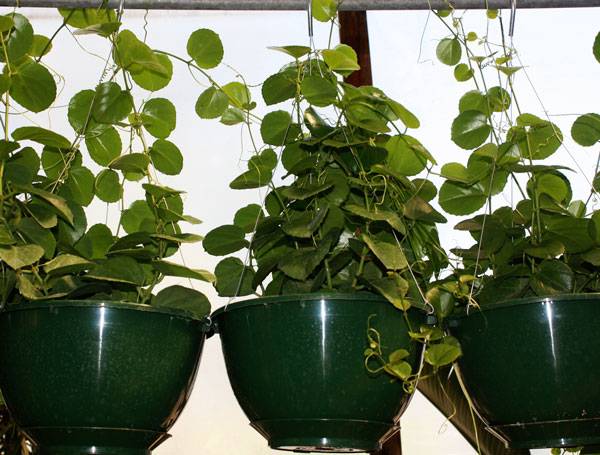

Green leaves are characterized by a waxy coating and rounded shapes with fine teeth at the edges. - Cissus striata (striped). Differs in the smallest three-lobed or five-lobed leaves in the genus.


The stems of the plant can grow up to 10 m. The shoots are characterized by a reddish tint. The flowers are light green in color, after pollination, black fruits ripen.
Care rules
Finding a suitable place for cissus is quite easy, and just as easy to care for in the future.
Top dressing is carried out every two weeks. For this, complex fertilizers for indoor plants are used.
Loosening of the soil is carried out every two weeks. This is necessary to saturate the soil with oxygen, which will feed the plant roots. Thanks to which it will grow faster.
Young plants require moderate watering, periodic loosening and spraying.
In general, the birch does not like excessive moisture in the soil. In summer, you need to ensure that the soil is always moist. In summer, it is better to water in the evening, when the sun has already set. In winter, watering can be reduced, but you also need to take care that the soil does not turn into a dry earthen lump. It is recommended to use separated water, about 25 ° С.
It is advisable to water the pet with a watering can - this will evenly moisten the soil. It is imperative to observe how water is absorbed into the soil. If everything happens quickly, then the container is still suitable and does not need to be transplanted yet. And if water stays on the surface of the soil, then you need to think about changing the substrate.
Rocissus has a slight weakness for showering. You can take the plant to the bathroom and water it with a gentle stream. If the birch tree has become too large, then you can not carry it in the bath, but simply wipe each leaf separately with a soft cloth.
Planting and transplanting a flower
If the flower was purchased in a specialized store, it will need to be immediately transplanted into full-fledged soil. The birch should be transplanted into a larger pot so that the flower is more comfortable, and the root system has a place where it can develop further.
No matter, how the birch plant was obtained - in a store or by reproduction, certain transplant rules must be followed.
- First, you should prepare the ground. To do this, first put a layer of sand on the bottom of the pot - about 15-20 centimeters.
- On top of the drainage layer, lay out a part of the soil, which should consist of turf, humus, leafy soil and coarse sand. This mixture should fill one third of the entire pot.
- After that, you need to take the flower and very carefully distribute its roots in the center of the soil, and fill the pot to the edge with the rest of the soil.
- The birch should be transplanted so that the roots of the flower do not reach the surface of at least three centimeters.
- When transplanting into new soil, do not tamp the ground.
- As soon as the planting process is completed, the soil must be watered, and the pot with the plant must be placed in a dark place for at least several days.
- The flowerpot should be chosen not plastic, but ceramic or clay, since they are excellent for air and moisture permeability.
Produce top dressing immediately after transplanting the plant is not required, since there is already a sufficient amount of all useful components necessary for a flower in the soil.
Reproduction methods
There are two ways to reproduce Rocissus:
- Division of the bush.
- Cuttings.
It is carried out in the spring when transplanting. The plant is neatly divided into two or three parts, depending on the size, and planted in separate pots.
Acceptable at any time of the year. Cuttings are cut and planted in 3-4 pieces in one container. Workpieces should be selected with three to four buds.
REFERENCE: Rooting occurs at a temperature of 20-22 degrees in 20 days. Roicissus quickly begins to sprout and grows into a lush, beautiful flower in a short time.
What diseases is the indoor birch prone to?
The birch is very rarely exposed to diseases and attacks of parasites. But even so, sometimes it happens that the flower begins to wither. There are several main explanations for this.
- If the surface of the leaves of a plant, simultaneously on both sides, is affected by a barely noticeable thin cobweb, then the flower has been attacked by a spider mite. In order to get rid of the tick as soon as possible, all affected leaves should be cut off, and the plant itself should be treated with a liquid infused with garlic or onions. You can also use insecticidal agents like Actellicom and other similar drugs.
- Rotting of the roots of a plant occurs during its infection with a fungal infection that affects not only the roots themselves, but also the bases of the plant cuttings. Infection occurs due to infection of the soil where the plant is planted. This is due to frequent and abundant watering. To reanimate a birch, it is enough to transplant it into a new soil to a new place, and stop flooding the plant with water.
- If a huge accumulation of small insects is observed on the surface of the shoots, as well as on the back of the foliage, it means that it is affected by leaf aphids. You can quickly get rid of parasites by treating the plant with insecticidal preparations or with an ordinary solution of soapy water.
- If a light bloom began to appear on the delicate leaves of a birch, it means that it was struck by powdery mildew. In this case, the leaves begin to fall off, and the plant itself withers and loses its green mass. To cure a birch from powdery mildew, you will need to treat it with a special preparation, for example, "Skor" or "Topaz".
- A disease such as a scabbard occurs due to violations of the rules for caring for a home birch. It manifests itself in the appearance of small growths on the surface of the plant. However, treatment with special means, as well as normalization of watering and loosening of the soil, can cure the flower and help it quickly recover.
It must be remembered that the indoor birch is not only beautiful, but also a very useful plant for human health, capable of filtering the air in any room.



